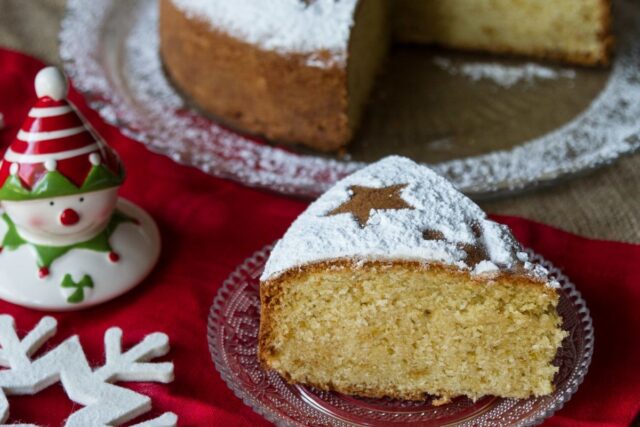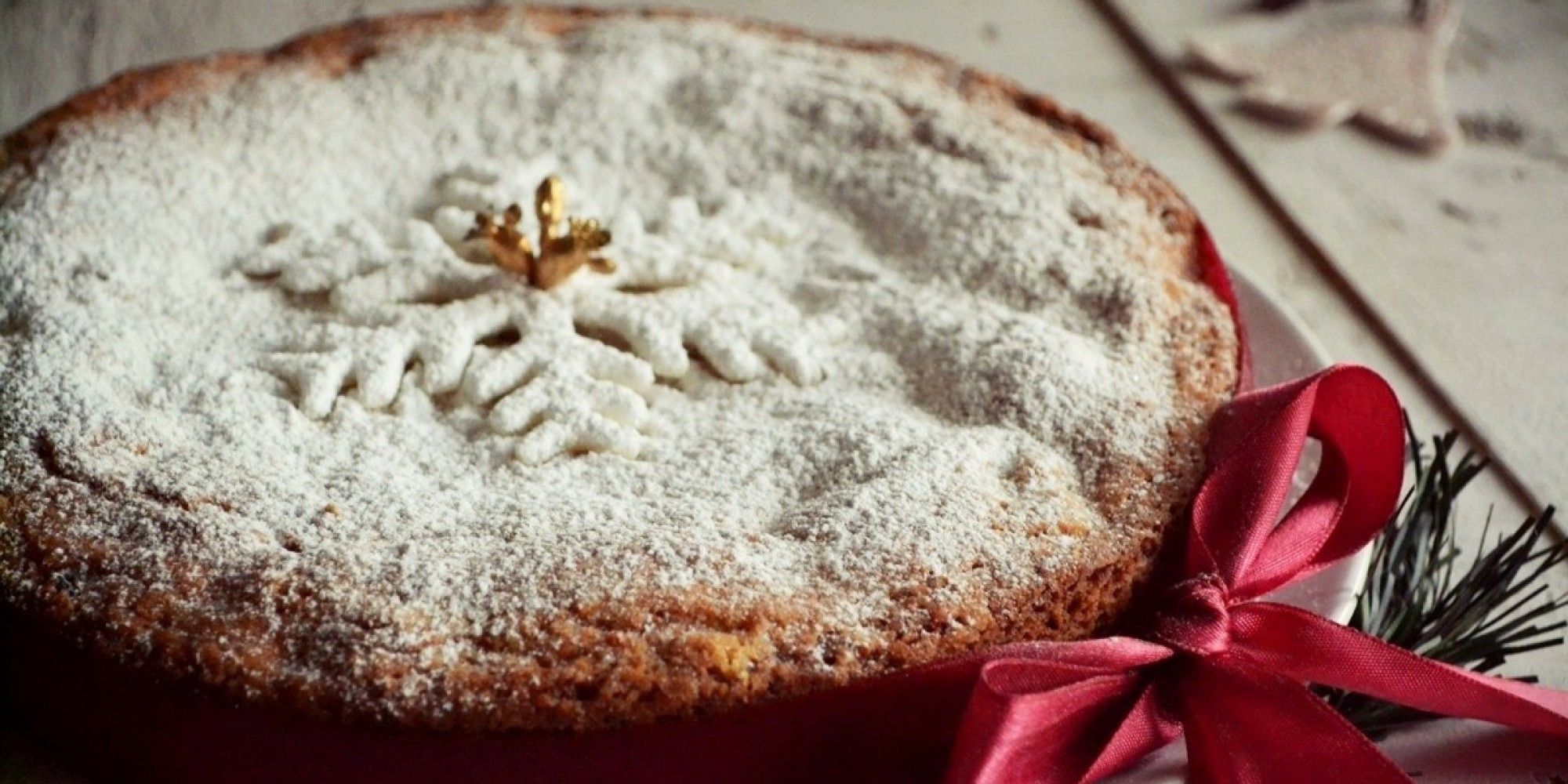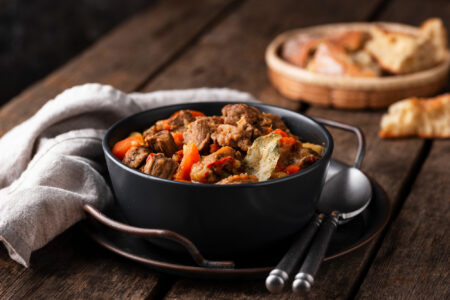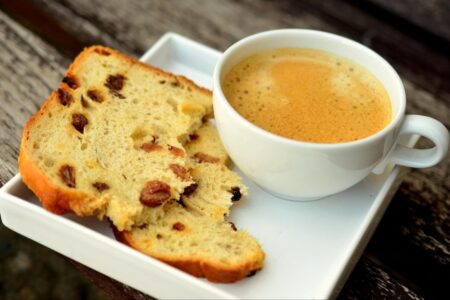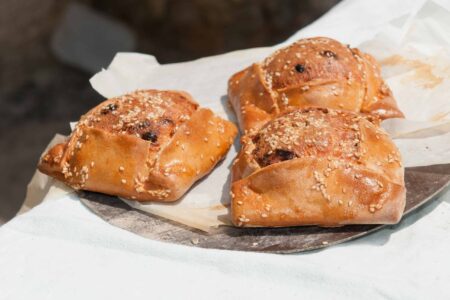Vasilopita is one of the most symbolic and revered dishes of Cypriot cuisine, associated with the celebration of the New Year and St. Basil’s Day. This fragrant pie, made with love and good wishes, holds a special place in Cypriot culture. It is baked in every home on New Year’s Eve, decorated with ornaments, and a coin is always hidden inside, bringing good luck to whoever finds it.
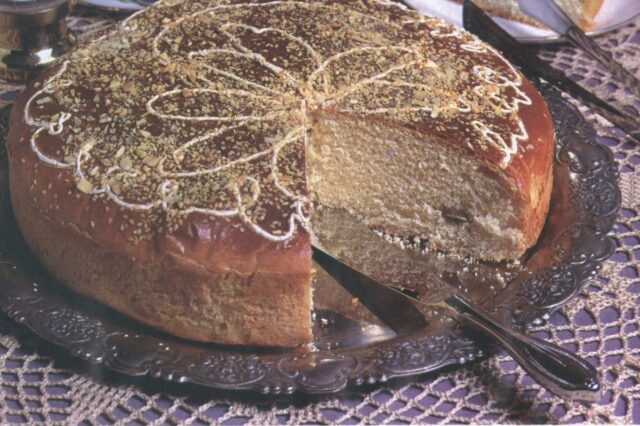
Contents
History and origin of the tradition
The pie’s name comes from Saint Basil the Great (Agios Vasilios), the fourth-century Archbishop of Caesarea in Cappadocia. According to legend, during his tenure, the city’s residents suffered from oppression and unfair taxes. Saint Basil collected donations to help the people, but when the danger passed, he didn’t know who each valuable belonged to. So the saint ordered many pies to be baked, placing a gold coin in each, and distributed them among the people. Thus, each person received their property back randomly, and the coin-pie tradition has survived for centuries.
The custom was brought to Cyprus by the Orthodox Church and the Greek diaspora in Asia Minor. Over time, the recipe adapted to local ingredients, and the Cypriot version of Vasilopita acquired its unique flavor and aroma.
The symbolism and meaning of pie
Vasilopita is not just a dessert, but a ritual dish symbolizing abundance, blessings, and good fortune in the new year. A coin hidden inside the dough becomes a sign of fate: whoever gets it will be blessed with happiness and success in the coming year.
The pie itself is cut strictly according to tradition. The first piece is always dedicated to Christ, the second to the Virgin Mary, the third to Saint Basil, the fourth to the house, and then to family members in order of seniority. This ritual is accompanied by a blessing and wishes for peace, health, and prosperity.

Features of the Cypriot version
Although Vasilopita is baked throughout Greece, it has its own distinctive flavor in Cyprus. Unlike its mainland counterpart, which often resembles a cake, the Cypriot version is closer to yeast bread or brioche —airier, softer, and slightly sweet.
Key ingredients include:
- premium wheat flour;
- yeast;
- milk and butter;
- sugar;
- eggs;
- orange zest and juice;
- vanilla, cinnamon or mastic (a resin that imparts a light oriental aroma).
Some housewives add nuts, raisins, dates, or sesame seeds—it all depends on regional traditions and family preferences.
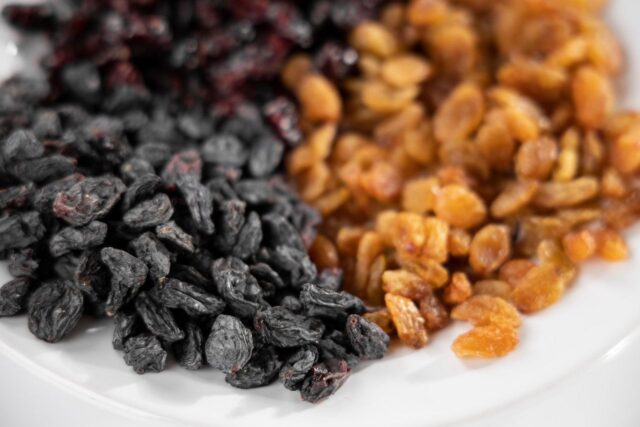
Cooking process
Vasilopita preparation begins on December 31st, when the whole family gathers in the kitchen. The dough is kneaded long and carefully until it’s soft and airy. After rising, it’s placed in a round pan, a coin wrapped in foil is inserted, and it’s decorated with patterns—dough patterns, almonds, or powdered sugar.
Before baking, a year is often laid out on the surface to signify the coming new calendar cycle. The pie is baked in a moderate oven for about an hour, until golden brown and filling the house with the aroma of vanilla and citrus.
When Vasilopita is ready, it is covered with a cloth and left until midnight – the first minutes of the New Year when the pie is ceremoniously cut.
How does the cutting ceremony take place?
After midnight, the family gathers around the festive table. The host takes a knife and makes a cross on the cake, saying,
“In the name of the Father, and of the Son, and of the Holy Spirit.”
He then cuts Vasilopita into pieces in a specific order:
- for Christ;
- for the Mother of God;
- for Saint Basil;
- behind the house;
- for the family members present;
- for those who are far away.
Everyone receives their piece, and then the anticipation begins: who will get the coin? It is believed that the owner of the lucky piece will be blessed with good luck, health, and success in all endeavors.
Modern interpretations
Modern Cypriot families sometimes bake two Vasilopitas—one with yeast dough, the other a shortbread cake with nuts and spices. Dozens of variations are sold in city pastry shops: with chocolate, fruit, dried fruit, pistachios, and even caramel glaze.

However, the essence of the tradition remains unchanged – each Vasilopita carries a wish for goodness, abundance and family unity.
In early January, businesses, schools, and offices across Cyprus also hold the Vasilopita cutting ceremony. This has become an important social ritual, symbolizing a new beginning, team unity, and hope for success.
Vasilopita in Cypriot culture
This pie is an integral part of the New Year’s celebration, and its significance extends beyond gastronomy. Vasilopita unites generations: children eagerly await the coin’s recipient, older people recite prayers, and young people share the tradition with friends.
In the villages of Troodos and Nicosia, pies are baked in communal ovens, and the aroma of fresh dough fills the streets on New Year’s Eve. Taverns and hotels in Cyprus also host ceremonial pie-cutting ceremonies for guests.
Some families have a custom: if the coin lands on the “house,” the owners must donate part of the money to charity so that good luck will follow everyone.
Interesting facts
- Vasilopita symbolically connects pagan winter solstice rites and Christian traditions, reflecting the continuity of Cypriot cultures.
- In the old days, in addition to coins, small figures or nuts could be placed in the dough, each of which symbolized a certain blessing – fertility, health or wealth.
- In the north of the island, where Turkish influence is stronger, there is a similar dish – a sweet nut cake called vasilopita tatlisi, but it does not contain a coin.
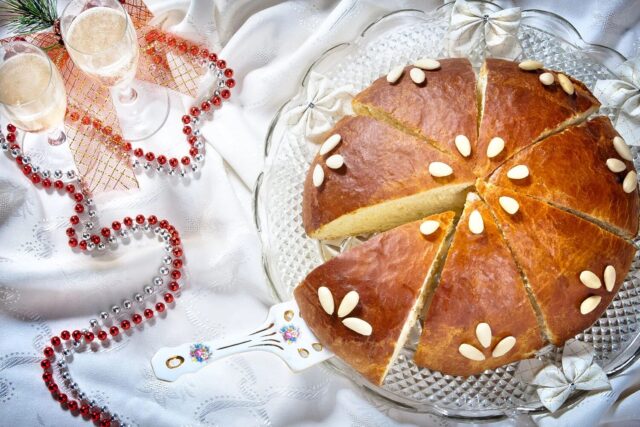
Where to try Vasilopita
The best time to try Vasilopita is from late December to the first week of January, when bakeries, pastry shops, and cafes throughout Cyprus offer fresh pies. The following are particularly famous :
- Nicosia – in the old bakeries in the Laiki Geitonia area;
- Limassol – in the pastry shops along the waterfront;
- Troodos and Platres – where pies are baked according to ancient recipes using local honey;
- Larnaca and Paphos – where Vasilopita is served with coffee and liqueur on New Year’s Eve.
Despite modern culinary trends, Vasilopita remains popular. It brings people together at the table, reminding them of family values and faith in the best. In every home, its aroma becomes a symbol of celebration, and the tradition of searching for a coin becomes a playful and kind ritual, bringing joy to children and adults alike.
